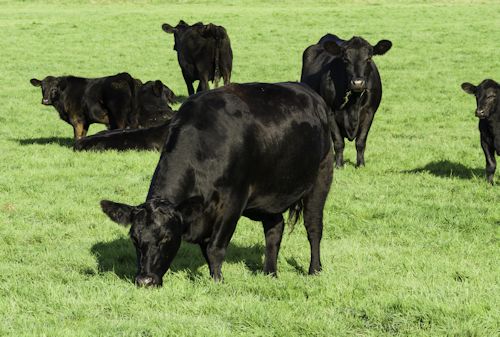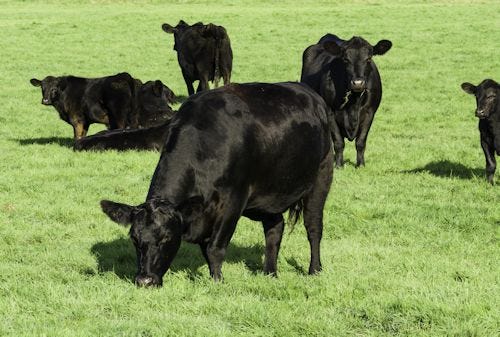
Merriam Webster's online dictionary defines "sustainable" as capable of being sustained, of, relating to, or being a method of harvesting or using a resource so that the resource is not depleted or permanently damaged, and of or relating to a lifestyle involving the use of sustainable methods. However, ask different groups of consumers and producers and the definition probably won't be so clear-cut. Sustainability is a word heard often, whether it's in the grocery store, in the blogosphere, or among producers themselves. The question is, "what does sustainability mean for different links in the supply chain?"

Earlier last year, the Global Roundtable for Sustainable Beef announced its definition of sustainable beef as a socially responsible, environmentally sound, and economically viable product that priorities planet, people, animals, and progress. Definitions within the supply chain vary slightly, but the guiding principle is the same – sustainability is about continuous improvement, and covers everything from economic viability and efficient use of resources to animal health and welfare and social responsibility within the community.
In December, at the Iowa Cattle Industry Convention in Des Moines, a panel group made up of representatives of different segments of the beef supply chain discussed what sustainability means to them, and how to meet rising global demand in a sustainable manner.
Different people, different definitions
One panel member, Chief Sustainability Officer and head of Corporate Affairs at JBS who also serves as president of the Global Roundtable for Sustainable Beef, and Cameron Bruett, brought up a good point in showing the 1948 Norman Rockwell painting, "The County Agent," as a depiction of how some consumers define sustainability. "It's this 1940s idyllic vision of agriculture, which does not represent our modern system," he said. "It's got a red and white barn, the little girl with the curly hair and her 4-H folder, the Extension agent, free-range chicken running around, cats and dogs are living together."
~~~PAGE_BREAK_HERE~~~
It might sound a little inflated to those of us who have been immersed in agriculture for so long, but it's pretty close to some of the consumer perspectives that have come to light in the last few years. A recent example came less than a month after Bruett made this analogy, when footage of a hog manure pit in North Carolina, taken by filmmaker Mark Devries using a UAV, wound up on several news websites, including the San Francisco Globe and International Business Times. In this video, Devries described the manure pit as "a lake of toxic pig feces and urine."
It's a perspective that, aside from overlooking the fact that human sewage is held in similar "toxic waste pits," also ignores the value in using this manure to fertilize crops which in turn feed the pigs, creating a continuous circle which makes use of all resources, or that the buildings that house pigs and improvements in efficiency mean more pork is produced with fewer pigs, reducing the overall environmental footprint. Continuous improvement and doing more with less is, by definition, sustainable.
What does sustainable beef look like?
It doesn't just apply to pork. Beef producers can and do take on the same mantra of sustainability, regardless of the system. As Bruett pointed out, many consumers associate sustainable with niche systems like organic or grass-fed – often without realizing that most cattle are grass-fed for part of their lives and are finished on grain. In fact, one of the most sustainable cow-calf systems I've seen, the Hoop Beef System, which originates in Iowa, involves feeding cows year-round under roof.
While making efficient use of corn coproducts and corn stover – parts of the stalk cows would otherwise avoid grazing in the field, it also provides uniform distribution of manure throughout the field. On the same token, everything comes full circle. Being under roof ensures animals are out of the elements, have comfortable bedding to rest in, can be fed in respective age groups to cater to their specific nutritional needs, and allows producers to optimize production with the space and resources available.
~~~PAGE_BREAK_HERE~~~
This isn't to say more traditional cow-calf systems on pasture aren't sustainable – the same definition applies to producers making the most efficient use of pastures acres available through management-intensive grazing, winter stockpiling, and grazing cool and warm season annual cover crops, extending the grazing season, ensuring more grass is available during drought, and improving soil health.
As Bruett puts it, "Anyone can be more sustainable if you are improving the efficiency of your operation and maximizing productivity."
About the Author(s)
You May Also Like






